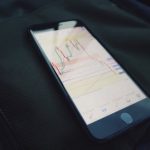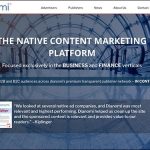want a cash Injection? imagine Going Public On A foreign change
here’s how one American CEO debuted her company on the Australian Securities exchange.
September three, 2015
simply as her startup was once turning five years previous, Shauna Mei’s buyers began to get antsy.
“There was once an excessive amount of drive from our VCs to assert, ‘hiya, do you need to probably consider selling the trade? What’s your next step?'” says Mei, founder and CEO of AHAlife.
AHAlife is a mission-backed discovery platform for matching discerning internet buyers with curated excessive-finish, restricted-model lifestyle products from a network of two,700 designers. eastern e-commerce conglomerate Rakuten numbers amongst its traders, having led a $10 million round of funding for the company in 2012.
however as her traders needled her on what was once subsequent for AHAlife, Mei says she was once conflicted.
“I simply didn’t need to sell the company. The industry used to be doing in reality neatly, and i wanted to proceed to build it and develop it,” Mei says. “the thought and idea of elevating another round of mission capital funding was once just by no means attractive. going down Sand Hill street and pitching VCs and having them ask you an identical questions wasn’t appealing to me. term sheets can get very convoluted to the purpose the place which you can grow to be the employee of your own firm.”
She additionally didn’t wish to go public on the American exchanges, which might entail months of painful disclosures and diminished power within the company she’d labored so hard to create.
Then Mei’s buddy Joanna Weidenmiller took her talent sourcing platform 1-web page public on the Australian Securities trade remaining fall (the first Silicon Valley tech company to take action), and Mei realized an possibility she had never prior to thought to be. If 1-page might go public on a international alternate with fewer than 10 staff, Aha could do it, too.
this is how Mei took her firm public greater than 7,000 miles away from Sand Hill road.
Rescued Down below
Mei had heard that the Australian public market was actively in search of excessive-growth technology opportunities. Upon further inspection, she found that the Australian landscape is subtle both in e-commerce and expertise use typically. The u . s . a . also has a big economy previously constructed on commodities and mining that has capital able to deploy in high-boom investments like know-how companies (particularly venture-backed ones like AHAlife).
“it is a actually incredible alternative for startup corporations who’re on the lookout for capital,” she says.
So around the start of 2015, she launched into the submitting course of for the ASX, which would take seven months all advised however concerned a long way fewer complications than the U.S. filing course of. She had raised sufficient capital to duvet the transaction charges, and for the reason that Australia does not have the identical of Sarbanes-Oxley (the 2002 U.S. federal regulation that elevated necessities for all public company boards, administration, and public accounting corporations), the appliance standards had been much much less stringent than within the U.S.
In July, AHAlife debuted on the ASX via a backdoor list with a private firm known as INT, which acquired Aha for $37 million.
through the transfer, Mei was able to stay on as CEO whereas raising $20 million in contemporary capital.
Going Public a ways From home
“It actually doesn’t suggest so much, other than the truth that we raised new capital and we’re public there. we are still a U.S. firm. We nonetheless pay U.S. taxes—everything is one hundred% U.S., with the exception of for the fact that our shares are floating in Australia,” Mei says. “In future rounds, after I elevate cash, it will be in accordance with what the stock is currently buying and selling at that cut-off date.”
Timing performs into fundraising any longer: “We do have to determine timing to be sure that we’re not elevating capital all the way through a nationwide difficulty or one thing like that.” however fundraising is not going to be on Mei’s mind for some time, she says.
“From our standpoint, particularly being an early-stage startup and still rising aggressively, it truly doesn’t suggest a lot. We generally focus on the way it’s buying and selling. We raised $20 million of capital,” she says. “We’re truly simply focusing on persevering with to develop the trade. And as we develop the trade someday, if we had been looking to boost extra capital, that’s after I assume it matters a lot more to take into accounts how are we valued.”
And simply because she elected to move up the U.S. exchanges for AHAlife’s first IPO doesn’t mean she is not going to ever go public in the States. The ASX has an ideal relationship with the NASDAQ, Mei says, easing the process for dually checklist a company on the Australian and U.S. exchanges when the time is correct. once AHAlife starts to alternate above the market cap for its shares on the ASX, she says it’s “quite simple” to come back to the NASDAQ, at which point an organization has a constructed-in trading historical past and institutional investor base.
AHAlife’s market cap is around $70 million—too small for NASDAQ just yet.
“In Australia, we’re nonetheless remarkable because they have quite a few firms which can be a lot smaller round that vary on the subject of market caps,” Mei says. once the corporate reaches a $200 million valuation, she says AHAlife will likely are trying to find an American IPO.
Prepping For An IPO
If it is the proper fit, a overseas change can offer an organization higher phrases than challenge or even angel investment rounds. “There are numerous different elements that i think can actually provide great capital and extra flexibility and steadily a lot better phrases because they may be keen to take a higher possibility to get get right of entry to to just right investment possibility,” Mei says.
She suggests prepping an organization to be public whereas it is still private. that features ensuring higher management is equipped for liaising with traders and shareholders, in addition to getting monetary records so as from the start.
“while you go public, you need to go through audited financials, and it can be reasonably a painful process. no matter what kind of startup you might be, it is really essential upfront to have the controls in situation and handle your budget very, very tightly with information.”
however although it is a meticulous course of, going public on a overseas alternate is definitely worth the headache, Mei says. She’s had entrepreneur pals take down rounds within the face of chapter, and she or he says that is a substitute for that fate. And whereas she can’t discuss to all international exchanges, she studied other exchanges when purchasing round, and made up our minds on ASX for numerous causes.
“Culturally, there’s much more parallels with Australia than, say, the U.k. or Hong Kong alternate,” she says. The investor base there understood her digitally native trade variation, which was once a should.
so long as entrepreneurs do their research on different markets and exchanges for the best that you can think of fit for their firm, they will have to be advantageous. don’t try to power hobby in a particular trade adaptation or product—be sure the ecosystem where you might be submitting is prepared for what you’re bringing to market.
“Had I known about this, i might have pursued it much ,” Mei says. “i think i’d have achieved it earlier than even my remaining mission capital round. i believe it can be another that entrepreneurs wish to find out about.”
[Flag photo: Markus Pfaff by the use of Shutterstock]
fast company , read Full Story
(92)














